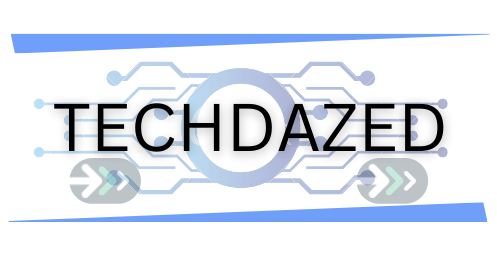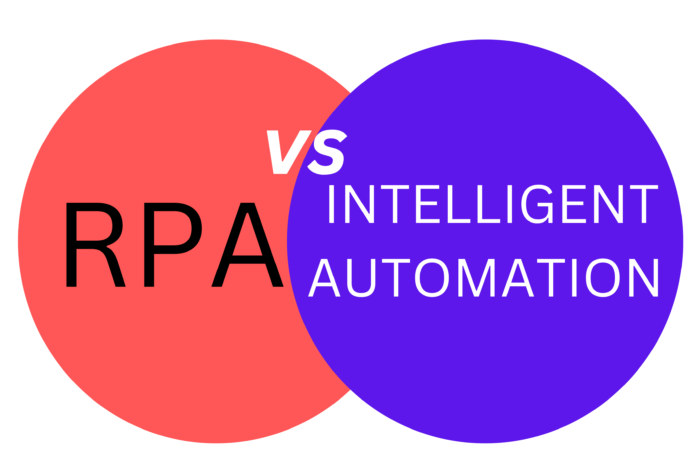In the transformative journey of businesses towards enhanced operational efficiency and digital prowess, automation technologies have emerged as pivotal enablers. Among them, Robotic Process Automation (RPA) and Intelligent Automation (IA) stand as notable landmarks. While they both stem from the desire to automate repetitive and time-consuming tasks, their approach and the extent of intelligence they imbibe are markedly different. RPA sets the foundation by automating routine, rule-based tasks, thereby freeing human resources for more value-added activities.
On the flip side, Intelligent Automation takes a giant leap forward by amalgamating RPA’s capabilities with Artificial Intelligence (AI) and Machine Learning (ML), thus not just automating tasks but adding a layer of intelligence that allows for learning, adaptation, and improved decision-making. The distinction between RPA and IA is crucial for organizations as they navigate their automation roadmap, with each offering unique benefits and challenges. Through a detailed examination of their core differences in scope, learning and adaptation, data handling, and more, businesses can better align their automation strategies with their operational goals and long-term vision.
Table of Contents
Drawing The Line RPA vs Intelligent Automation
In recent years, the fields of Robotic Process Automation (RPA) and Intelligent Automation (IA) have emerged as dominant forces reshaping the operational landscapes across industries. Despite their overlapping domains, they exhibit some major differences that distinguish their applications and impact on business processes.
Also read: Benefits Of Robotic Process Automation
1. Scope of Automation
– RPA streamlines repetitive, rule-based tasks that require little to no human intervention. By creating software robots or “bots”, RPA can mimic human actions to execute a clearly defined set of instructions. The scope of automation is confined to the pre-programmed rules and lacks the capability to handle exceptions or evolve with changing circumstances.
– On the other hand, Intelligent Automation encompasses a broader spectrum. It not only automates routine tasks but extends to more complex, cognitive functions by integrating artificial intelligence (AI) and machine learning (ML) technologies. IA is designed to manage unstructured data, make decisions, and learn from its interactions, which enriches its understanding and improves its performance over time.
Also read: Advantages Of Palletizing Cobots
2. Learning and Adaptation
– RPA operates within a static framework where the bots perform the tasks exactly as programmed without the ability to learn or adapt to new conditions. They are excellent for performing high-volume, repetitive tasks quickly and accurately but falter when faced with anomalies or new scenarios.
– In contrast, Intelligent Automation continuously learns and adapts from data and interactions. Through its AI and ML components, IA can identify patterns, derive insights, and improve its operations. It brings a level of adaptability and sophistication that allows it to tackle complex processes and adjust to evolving business environments.
Also read: Best Robotic Process Automation Software and Tools
3. Data Handling Capability
– RPA struggles with unstructured data, which constitutes a significant portion of the data businesses deal with daily. It requires data to be in a structured format to operate efficiently, which often necessitates additional manual interventions or complementary technologies to preprocess the data.
– Intelligent Automation excels in handling both structured and unstructured data. Its advanced analytics and natural language processing capabilities enable it to decipher, categorize, and process a wide variety of data types. This ability significantly reduces the manual effort involved in data preparation and enhances the automation of more nuanced, data-driven processes.
Also read: 6 Ways to Use Automation in Your Business
4. Integration and Scalability
– RPA presents a more linear approach towards integration. It’s designed to seamlessly integrate with existing systems and requires no alteration to the current IT infrastructure, making it a cost-effective solution for businesses looking to automate specific tasks without significant upfront investments. However, the scalability of RPA solutions may hit a wall as the demands for more complex processing and broader integrations arise.
– Conversely, Intelligent Automation, with its advanced AI and ML components, can offer a more dynamic integration and scalability. It can be customized to a higher degree, enabling deeper integration with existing systems and external platforms. Its design allows for a more seamless scaling to accommodate growing data volumes and evolving business processes, albeit often at a higher initial setup cost.
Also read: How the Role of Automation is Redefining Digital Security
5. Cost and Return on Investment (ROI)
– RPA generally entails lower initial costs and offers a quicker ROI, particularly in scenarios with high-volume, rule-based tasks. It helps organizations reduce operational costs and improve efficiency in a relatively short span of time, providing a cost-effective solution to automation.
– Intelligent Automation, due to its sophisticated technology and broader capabilities, usually demands a higher initial investment. However, the ROI with IA could be significantly higher in the long-term as it brings more profound operational transformations. By enabling automation of complex tasks, enhanced data analytics, and continuous learning and improvement, IA has the potential to deliver more substantial value over time.
Also read: Why Are Chatbots A Great Tool For Strategically Using Marketing Automation And AI?
6. Deployment and Maintenance
– RPA is often easier to deploy and maintain due to its rule-based nature. The bots require a setup with clear instructions to follow, and the maintenance generally involves ensuring that the bots are functioning as intended and adjusting to any changes in the underlying systems.
– Intelligent Automation, with its complex algorithms and continuous learning capabilities, may demand a more robust infrastructure and a higher level of expertise for deployment and maintenance. The ongoing tuning and training of the AI and ML models to ensure optimal performance can require a more substantial commitment in terms of time and resources.
Also read: What is Robotics for kids : How Robotics is Revolutionizing Learning for Kids
7. Regulatory Compliance and Monitoring
– The nature of RPA requires a structured environment where processes are carried out based on pre-set rules, making monitoring and compliance relatively straightforward. The transparency and repeatability of tasks performed by RPA bots allow for easier auditing and adherence to regulatory requirements. However, RPA lacks the ability to provide proactive compliance insights or adapt to changing regulatory landscapes autonomously.
– Intelligent Automation, on the other hand, brings a more dynamic capability to compliance and monitoring. By analyzing data and learning from patterns, IA can provide predictive insights on compliance issues, and in some cases, autonomously adapt to changing regulatory requirements. Its advanced analytics capabilities can help organizations to actively monitor compliance and reduce risks.
Also read: Major difference between robotics and mechatronics
8. Error Handling and Resolution
– RPA operates within a confined set of rules, and when an exception or error occurs outside of these rules, it typically requires human intervention for resolution. This can lead to operational delays and may necessitate a structured error-handling process to manage such exceptions efficiently.
– Intelligent Automation, with its cognitive capabilities, can handle errors or exceptions more autonomously. It can identify, analyze, and often resolve errors by tapping into its learned experiences and knowledge base. This proactive error handling significantly reduces the dependency on human intervention and enables smoother operational workflows.
9. User Interaction and Experience
– RPA’s interaction with users is often limited to basic interfaces and pre-defined responses. The user experience is generally static and lacks the personalized touch, making RPA more suited for backend automation where user interaction is minimal.
– In contrast, Intelligent Automation can significantly enhance user interaction and experience. By leveraging technologies like Natural Language Processing (NLP) and machine learning, IA can provide more intuitive and personalized interactions, making it suitable for customer-facing applications and enhancing overall user satisfaction.
10. Technology Adoption and Future Readiness
– RPA is often seen as a stepping stone towards a more advanced automation journey. It provides a solid foundation for organizations to reduce manual workload and save operational costs, paving the way for more sophisticated automation solutions.
– Intelligent Automation represents a forward-looking approach, aligning with the broader vision of digital transformation. Its adaptability, learning capabilities, and extensive data analytics position organizations better for embracing future technological advancements and evolving with the rapidly changing business ecosystems.
Also read: Cybersecurity Guide
Conclusion
The exploration of RPA and Intelligent Automation unveils a spectrum of automation capabilities, each suiting different organizational needs and maturity levels. RPA offers a solid starting point, providing quick wins in operational efficiency and cost reduction. Meanwhile, Intelligent Automation heralds a new era of smart operations, capable of driving more profound and strategic transformation. The choice between RPA and IA is consequential and requires a well-considered strategy, bearing in mind the current operational exigencies, future aspirations, and the readiness to embrace advanced technologies. As organizations advance in their digital transformation journeys, the insights into the diverse capacities of RPA and IA become invaluable in sculpting a resilient and forward-looking automation strategy.

